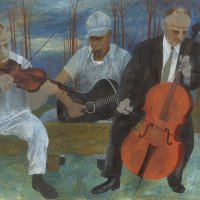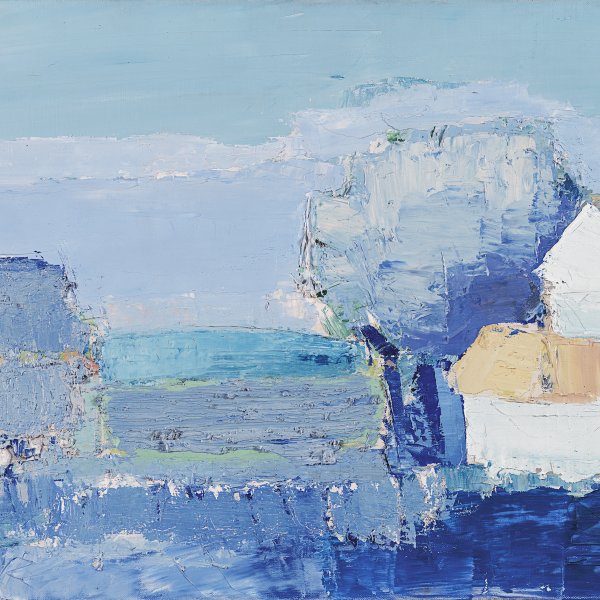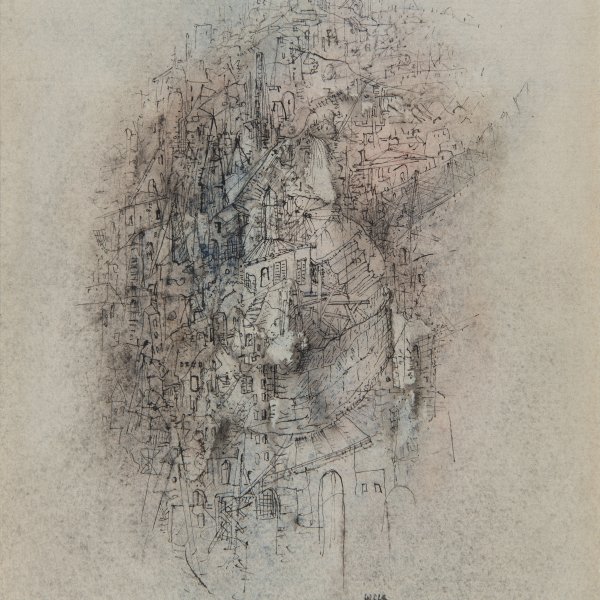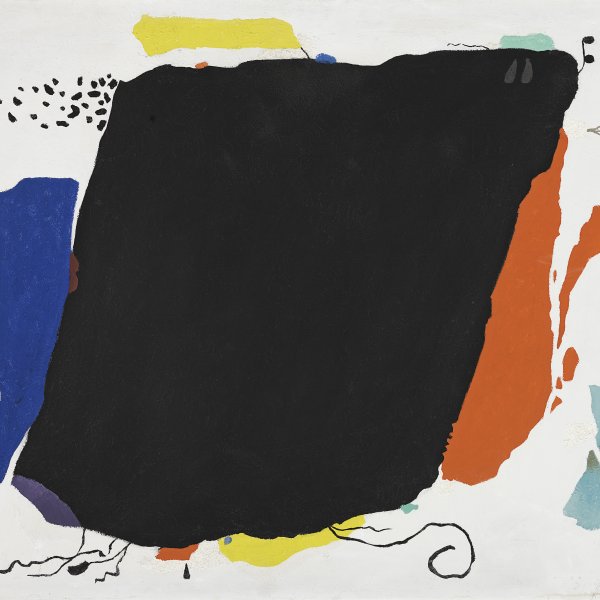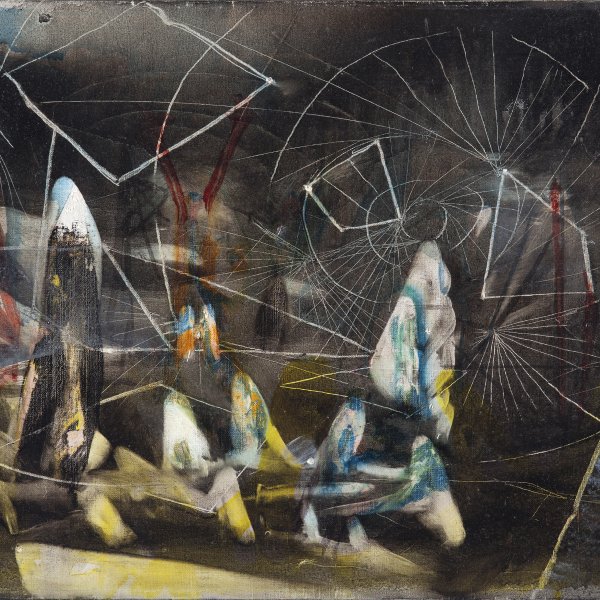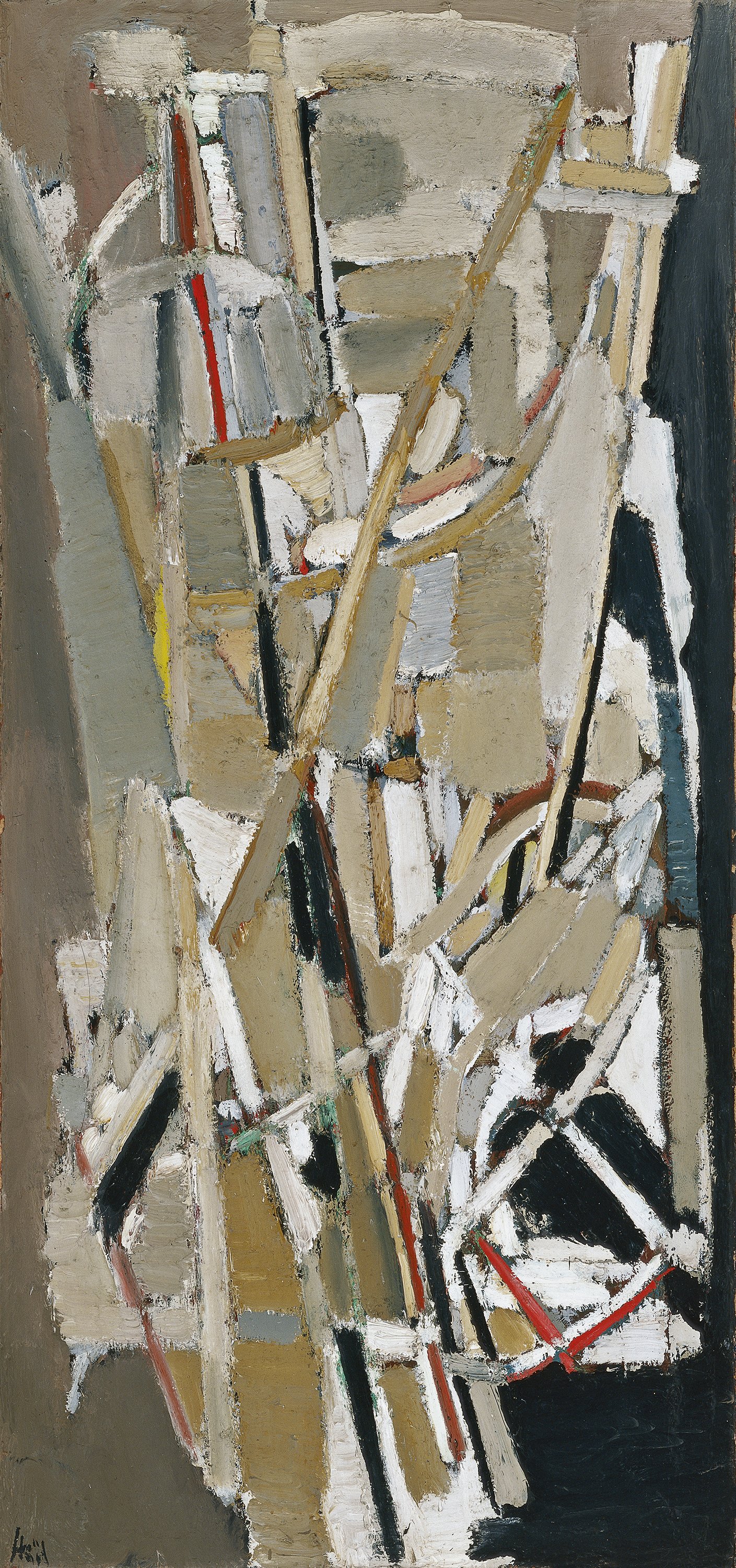Grey Composition
1948
Oil on canvas.
148.5 x 68.5 cm
Museo Nacional Thyssen-Bornemisza, Madrid
Inv. no.
764
(1963.3
)
Room 50
Level 1
Permanent Collection
Nicolas de Staël, who belonged to a Russian aristocratic family, was forced to lead an agitated and traumatic existence in exile until finally settling in Paris in 1938 with the intention of becoming a painter. From the outset Staël was an experimental artist who was more empirical than ideological and for a time espoused abstraction in order to be able to express in painting his perceptions of space and light. However, his concerns were essentially subjective and mystic and, unlike many of his contemporaries, he questioned the abstract formulas in vogue and was concerned about the manner of transferring tonal and formal relations to canvas. His Russian soul spurred him to engage in a permanent dialogue with other art forms: literature, poetry and, above all, music. Many of his paintings are inspired by musical compositions of Bach, Mozart and Bartok, and are always underpinned by cadences which denote a mastery of rhythm and melody.
Grey Composition, executed in 1948, belongs to a period in which Staël’s heavily impastoed painting became filled with linear rhythms and planes of colour which float over a neutral background. The asymmetrical linear network of large intermingled segments — which the historian André Chastel called “ bâtonnets (small sticks)”— creates a dynamic space of contrasting forms and colours. The sense of composition, derived from the synthetic Cubism of Georges Braque, a painter he admired throughout his lifetime, and the arrangement of forms and colours are not fortuitous but have been thoroughly studied. The subtle, luminous palette is restricted to ochres, browns, greys and blacks, applied with brushes and palette knives in very thick layers that modulate matter and construct space by means of colour.
Paloma Alarcó
Grey Composition, executed in 1948, belongs to a period in which Staël’s heavily impastoed painting became filled with linear rhythms and planes of colour which float over a neutral background. The asymmetrical linear network of large intermingled segments — which the historian André Chastel called “ bâtonnets (small sticks)”— creates a dynamic space of contrasting forms and colours. The sense of composition, derived from the synthetic Cubism of Georges Braque, a painter he admired throughout his lifetime, and the arrangement of forms and colours are not fortuitous but have been thoroughly studied. The subtle, luminous palette is restricted to ochres, browns, greys and blacks, applied with brushes and palette knives in very thick layers that modulate matter and construct space by means of colour.
Paloma Alarcó

